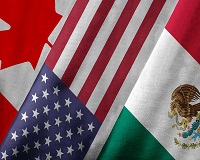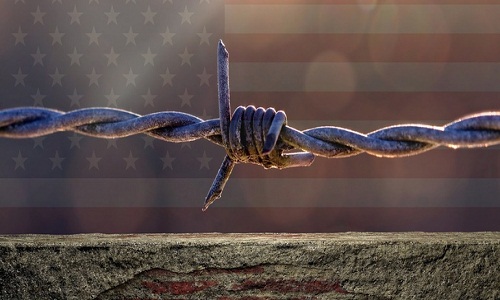"The US demand raises one big question of whether trade-preference levels (TPL) could be altered, allowing for some non-regional yarns and fabric to be used even though garments were produced within the free-trade area; thus enabling them to receive duty-free status. US representatives, in their previous trade negotiations, had proposed eliminating TPLs. The fact sheet of the US Trade Representative also stated the Trump administration wants to limit the use of non-NAFTA inputs in the textile and apparel trade.
 Though, the full details of the renegotiated free-trade deal between the United States and Mexico haven’t been revealed yet, and not likely to be known for another month at least, what is known is that the US government wants to source accessories such as sewing thread, pocketing fabric, narrow elastic bands and coated fabric from the free-trade region to qualify for duty-free benefits. Under previous NAFTA deal, those raw materials could be sourced from any region in the world.
Though, the full details of the renegotiated free-trade deal between the United States and Mexico haven’t been revealed yet, and not likely to be known for another month at least, what is known is that the US government wants to source accessories such as sewing thread, pocketing fabric, narrow elastic bands and coated fabric from the free-trade region to qualify for duty-free benefits. Under previous NAFTA deal, those raw materials could be sourced from any region in the world.
The importance of TPL
The US demand raises one big question of whether trade-preference levels (TPL) could be altered, allowing for some non-regional yarns and fabric to be used even though garments were produced within the free-trade area; thus enabling them to receive duty-free status. US representatives, in their previous trade negotiations, had proposed eliminating TPLs. The fact sheet of the US Trade Representative also stated the Trump administration wants to limit the use of non-NAFTA inputs in the textile and apparel trade.
Tom Gould, Senior Director, Customs and International Trade, Sandler, Travis & Rosenberg, has revealed his customers who produce in Mexico plan to use the TPLs as long as possible until the specifics of a new trade deal are implemented. And if they can’t use those TPLs, they would not hesitate to use regionally produced fabrics or move their production to other countries to keep their costs low.
Changing scenario under NAFTA 2.0
Apparel companies in Los Angeles that produce 100 percent in Mexico should be concerned about changes under NAFTA 2.0. For years, sewing thread and pocket linings under the Dominican Republic–Central America Free Trade Agreement would be sourced from regional sources, but that would no longer be the case under NAFTA.
and pocket linings under the Dominican Republic–Central America Free Trade Agreement would be sourced from regional sources, but that would no longer be the case under NAFTA.
Les Miller, the Chief Executive Officer at American & Efird, feels most Mexican apparel factories currently use regional sewing thread as it streamlines the production process. It also makes the import-export process easier and more efficient as they don’t have to explain where their non-regional sewing thread came from. In the past, apparel factories would often use fabric scraps leftover from production to make pocket linings. With the new arrangement, apparel manufacturers will have to verify those scraps come from regionally made fabric instead of Asian or Central American fabrics.
The Canadian involvement
Although President Trump has threatened to exclude Canada from the pact if it doesn’t agree to some of the United States’ demands, trade groups across the US want Canada to be a part of it to make it a trilateral agreement. The US-Mexico Trade Agreement submitted to the US Congress would give them 90 days of time to examine the agreement. Once these reviews are conducted, businesses and the public will have a better perspective on the contents of the free-trade agreement.












